
The Phalacridae are a family of beetles commonly called the shining flower beetles, They are often found in composite flowers. They are oval-shaped, usually tan, and about 2 mm in length. Most species feed on fungus, although a number feed on flower heads.
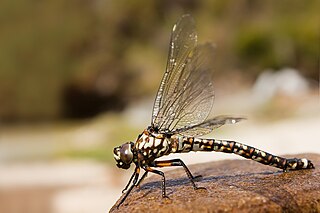
Aeshnidae, also called aeshnids, hawkers, or darners, is a family of dragonflies, found nearly worldwide, with more than 50 genera and over 450 species.
William Elford Leach was an English zoologist and marine biologist.

The Tenebrionoidea are a very large and diverse superfamily of beetles. It generally corresponds to the Heteromera of earlier authors.

Delphacidae is a family of planthoppers containing about 2000 species, distributed worldwide. Delphacids are separated from other "hoppers" by the prominent spur on the tibia of the hindleg.

Hydraenidae is a family of very small aquatic beetles, sometimes called "Minute moss beetles", with a worldwide distribution. They are around 0.8 to 3.3 mm in length. The adults store air on the underside of the body as well as beneath the elytra which allows them to crawl underwater, often on the underside of the water surface tension, though they cannot swim. Some species have gills that effectively allow them to stay underwater indefinitely. Larvae vary from being fully terrestrial, to being aquatic at least in their earliest instars. The diet of hydraenid larvae and adults is thought to consist of algae, spores and other plant matter. At least some hydraenid adults use stridulation to communicate. There are around 1,300 species in 42 genera.

Baetidae is a family of mayflies with about 1000 described species in 110 genera distributed worldwide. These are among the smallest of mayflies, adults rarely exceeding 10 mm in length excluding the two long slender tails and sometimes much smaller, and members of the family are often referred to as small mayflies or small minnow mayflies. Most species have long oval forewings with very few cross veins but the hindwings are usually very small or even absent. The males often have very large eyes, shaped like turrets above the head.

Ibacus peronii, the Balmain bug or butterfly fan lobster, is a species of slipper lobster. It lives in shallow waters around Australia and is the subject of small-scale fishery. It is a flattened, reddish brown animal, up to 23 cm (9 in) long and 14 cm (6 in) wide, with flattened antennae and no claws.

Axiidae is a family of crustaceans belonging to the infraorder Axiidea, within the order Decapoda.
Etyiidae is a prehistoric family of dromiacean crabs only known from Cretaceous and a few Paleocene fossils.

Cirolanidae is a family of aquatic isopods.
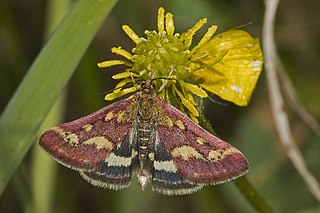
The Obtectomera is a clade of macro-moths and butterflies, comprising over 100,000 species in at least 12 superfamilies.

Cymothoida is the name of a suborder of isopod crustaceans with a mostly carnivorous or parasitic lifestyle. It contains more than 2,700 described species in four superfamilies. Members of the suborder are characterised by their specialised mouthparts which include a mandible with a tooth-like process which is adapted for cutting or slicing.
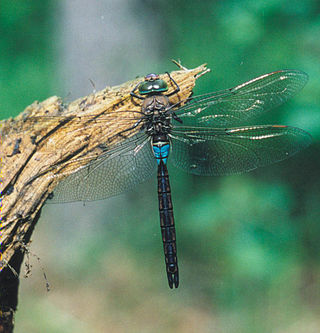
Anax is a genus of dragonflies in the family Aeshnidae. It includes species such as the emperor dragonfly, Anax imperator.

Chrysopa is a genus of green lacewings in the neuropteran family Chrysopidae.
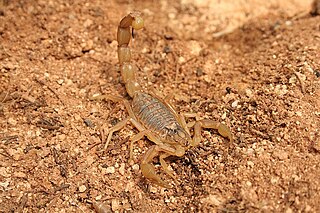
Buthus is a genus of scorpion belonging and being eponymous to the family Buthidae. It is distributed widely across northern Africa, including Morocco, Mauritania, Algeria, Tunisia, Libya, Egypt, Senegal, Guinea-Bissau, Nigeria, Sudan, Somalia, Ethiopia, Djibouti, as well as the Middle East, including Israel, Palestine, Jordan, Lebanon, Iraq, Yemen, and possibly Saudi Arabia and southern Turkey. Its European range includes the Iberian Peninsula, southern France, and Cyprus.

Silphinae is a subfamily of carrion beetles. There are 113 extant species of this subfamily, in two tribe and in 14 genera. It contains the following tribes and genera:

Delphacinae is a subfamily of delphacid planthoppers in the family Delphacidae. There are at least 1,700 described species in Delphacinae.
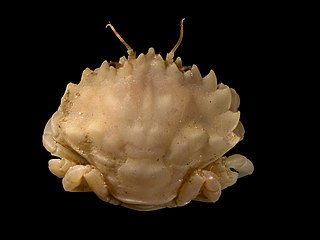
Pirimelinae is a subfamily of crabs belonging to the family Carcinidae in the order Decapoda. It previously was treated as a family.
















